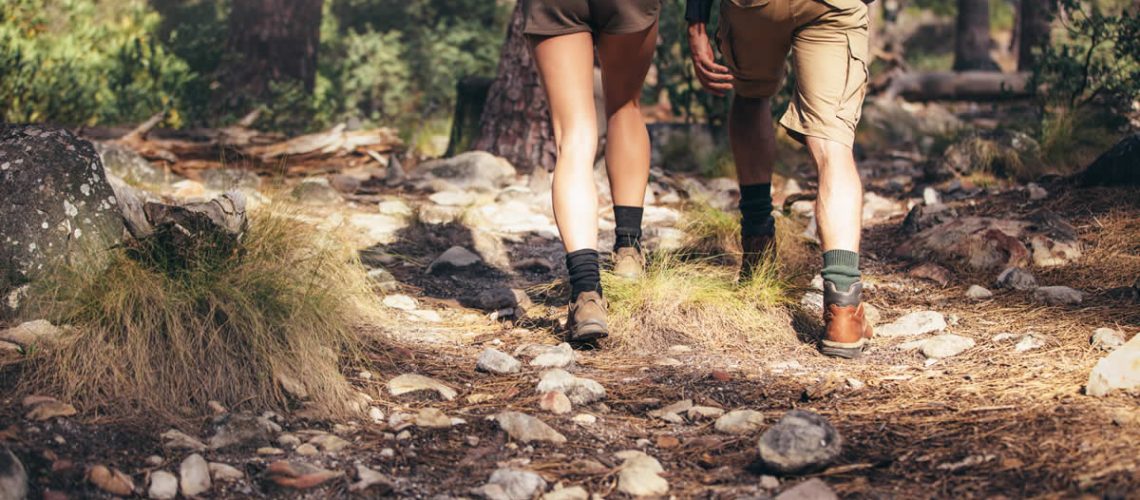
We all know what it feels like to be on our feet all day. Be that from work, parenting or generally being busy. But what if we place even more demands on our feet by enjoying all that our wonderful countryside offers us?
If you walk or hike in your spare time, it’s worth putting in a little extra effort to take care of your feet. After all, if you look after them, they’ll most certainly look after you, allowing you to explore to your hearts’ content. Here’s how.
Buying your walking boots from a dedicated outdoor pursuits retailer is best. They will be able to advise you on what suits your feet and your needs, best.
If you have a brand and style that you know suits you, don’t be tempted to stray when it comes to new boots time.
Always break your boots in on a few shorter walks before embarking on a long or difficult trail.
Your socks are the inner comfort and protection to the dependability, trustworthiness and sturdiness of your walking boots. You wouldn’t go for substandard boots, so don’t scrimp on your socks, either – save the seen-better-days versions for your days off.
Always wear socks that are meant for hiking, rather than catch-all sports socks. Some walkers wear double layered socks to protect against friction, but beware moisture.
As a general rule, thinner socks retain less moisture, whether from sweat or external conditions, and they dry more quickly.
… without treatment, they WILL get worse.
As soon as you feel a sore patch or hot spot, stop and remove your boot(s) and sock(s). Use tape, blister plasters (Compeed are the most well-known) and/or moleskin to protect new blisters. Also use a clean pin (part of any good hikers’ kit) to lance and drain away fluid from larger, fluid-filled blisters.
Assuming you will get blisters by taping up the areas that you know are your weak points before heading out will help. Also, use a healing foot cream between walks to help treat dry skin and cracks that can turn nasty.
Keep your toenails short and cut them straight across to prevent them cutting into your socks and causing rubbing and blisters.
Clean feet are important. Cleaning your feet helps to get rid of dirt that can infect any sores or blisters and also annoying bits of sand or grit that can be the cause of blisters in the first place.
But dry feet are even more important. During a muddy walk or a hike that involves water, this is all but impossible, even with waterproof footwear. So, reducing the impact of wet feet is essential. This means taking off damp socks and boots and soon as possible.
Even if you’re unable to wash your feet straight away, removing soggy socks and airing your feet will help to minimise the risk of blisters, cracks and nasty infections.
Once you’ve been able to wash your feet, dry them properly, including between your toes, and use an antiseptic trail balm, like our Hand and Foot Repair Cream or our foot balm for walkers, specially developed for protecting and nourishing the feet. Then put clean, dry socks on.
If you’re able to, change your socks for a dry pair mid-way through a walk or hike. Keep your spare socks and any blister treatments and balms zipped up in a waterproof kit bag in your backpack.
If you’re camping, take extra care to keep your feet as clean and as dry as possible. Things generally prove a bit trickier when we’re camping. Especially so if you’re without the luxury of proper onsite showers.
Getting dressed sitting down and dealing with damp towels just adds to the risk that we might hurriedly put our socks on when our feet and toes are not completely dry.
It can be tempting too, to dry your feet by wiggling them in front of the camp fire, but beware the dreaded chilblains. Chilblains are caused by cold conditions reducing the blood flow to the feet (and hands) and then warming them up too quickly. They’re painful, small red spots that can take a few weeks to clear up – not what you need on a long hike.
Keep a pot of Trail skin balm at hand – Happy feet, happy hiker – enjoy!